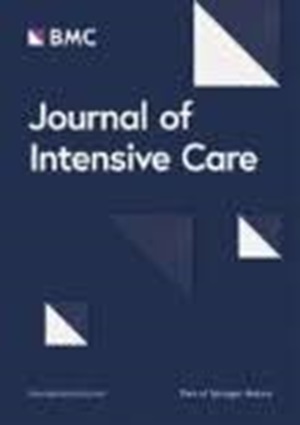Mechanical circulatory support in cardiogenic shock
IF 4.7
2区 医学
Q1 CRITICAL CARE MEDICINE
引用次数: 0
Abstract
Cardiogenic shock is a complex and diverse pathological condition characterized by reduced myocardial contractility. The goal of treatment of cardiogenic shock is to improve abnormal hemodynamics and maintain adequate tissue perfusion in organs. If hypotension and insufficient tissue perfusion persist despite initial therapy, temporary mechanical circulatory support (t-MCS) should be initiated. This decade sees the beginning of a new era of cardiogenic shock management using t-MCS through the accumulated experience with use of intra-aortic balloon pump (IABP) and venoarterial extracorporeal membrane oxygenation (VA-ECMO), as well as new revolutionary devices or systems such as transvalvular axial flow pump (Impella) and a combination of VA-ECMO and Impella (ECPELLA) based on the knowledge of circulatory physiology. In this transitional period, we outline the approach to the management of cardiogenic shock by t-MCS. The management strategy involves carefully selecting one or a combination of the t-MCS devices, taking into account the characteristics of each device and the specific pathological condition. This selection is guided by monitoring of hemodynamics, classification of shock stage, risk stratification, and coordinated management by the multidisciplinary shock team.心源性休克的机械循环支持
心源性休克是一种复杂多样的病理状态,其特点是心肌收缩力减弱。心源性休克的治疗目标是改善异常血流动力学,维持器官内足够的组织灌注。如果初始治疗后仍出现低血压和组织灌注不足,则应启动临时机械循环支持(t-MCS)。通过使用主动脉内球囊反搏泵(IABP)和静脉体外膜肺氧合(VA-ECMO)积累的经验,以及基于循环生理学知识的新革命性设备或系统,如经瓣膜轴流泵(Impella)和 VA-ECMO 与 Impella 的组合(ECPELLA),本十年见证了使用 t-MCS 治疗心源性休克新时代的开始。在这一过渡时期,我们概述了使用 t-MCS 治疗心源性休克的方法。管理策略包括仔细选择一种或多种 t-MCS 设备,同时考虑到每种设备的特性和具体病理情况。这一选择需要以血液动力学监测、休克分期分类、风险分层以及多学科休克团队的协调管理为指导。
本文章由计算机程序翻译,如有差异,请以英文原文为准。
求助全文
约1分钟内获得全文
求助全文
来源期刊

Journal of Intensive Care
Medicine-Critical Care and Intensive Care Medicine
CiteScore
11.90
自引率
1.40%
发文量
51
审稿时长
15 weeks
期刊介绍:
"Journal of Intensive Care" is an open access journal dedicated to the comprehensive coverage of intensive care medicine, providing a platform for the latest research and clinical insights in this critical field. The journal covers a wide range of topics, including intensive and critical care, trauma and surgical intensive care, pediatric intensive care, acute and emergency medicine, perioperative medicine, resuscitation, infection control, and organ dysfunction.
Recognizing the importance of cultural diversity in healthcare practices, "Journal of Intensive Care" also encourages submissions that explore and discuss the cultural aspects of intensive care, aiming to promote a more inclusive and culturally sensitive approach to patient care. By fostering a global exchange of knowledge and expertise, the journal contributes to the continuous improvement of intensive care practices worldwide.
 求助内容:
求助内容: 应助结果提醒方式:
应助结果提醒方式:


